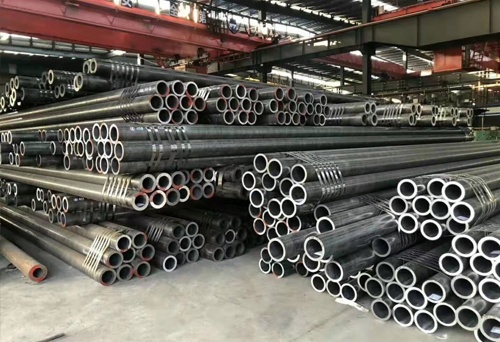

For 18-20-gauge sheet, set the current around 25. The thicker the metal, the higher you’ll set the current. Next, set the current for the plasma cutter. Connect the plasma cutter to your air compressor and turn on the air. But, for thick pieces of stainless, it’s your best option.įirst, you’ll need to prepare the plasma cutter. For thinner material, a plasma cutter may be overkill. Using a Plasma CutterĪ plasma cutter is a useful cutting tool that can make quick work out of any metal, including stainless.
CUT STAINLESS STEEL PIPE FULL
Allow the tool to reach full RPM before beginning your cut and slowly work your way through the metal. With an angle grinder, the same principles you’d apply with the circular saw are in place.Īlways make sure you’re wearing safety gear. Then, lower the saw to the surface and allow the saw to slowly work through the material until you’ve completed your cut. Once you’re prepared, turn the saw on and allow it to reach full RPM before you begin cutting. Wearing long sleeves and pants will also help prevent you from getting any metal splinters. Whether you’re using a saw, grinder, or plasma cutter to cut, you’ll need to wear safety goggles (or a full face shield) and heavy-duty gloves. The most important thing to remember is that you’ll need a proper metal cutting blade.īefore you begin cutting, make sure you’re taking proper safety precautions. Using a Circular SawĪ circular saw can come in handy for cutting through pieces of steel too thick for tin snips or power shears. To cut stainless with power shears, place the steel into the jaws of the power shears, squeeze the trigger, and slowly work your way through the material until you’ve completed your cut. These shears will chomp out a thin strip of metal from the middle of the cut. Power shears work a lot like the tin snips, except they have a motor. Use the tin snips as you would a pair of scissors and slowly work your way through the material, making sure not to cut yourself on the edge you’ve created. If you’re working with thin steel, a pair of tin snips will make quick work of the job. For really heavy duty steel, a plasma cutter is your best option. You can also use a circular saw for stainless tubing. Thicker sheets will require power shears, a circular saw or an angle grinder. If you’re cutting through thin stainless sheets, tin snips are your best option.

Once you’ve set up your workspace and measured and marked for your cut, it's time to select a tool for the job. If you’re going to be cutting a straight line, use a ruler or square to get a perfectly straight line. Use your marker to mark off where you need to cut. Use your tape measure to get an accurate measurement for the area you need to cut. Otherwise, make sure you remove anything flammable from the area, as sparks are going to be flying as you cut. If you’re going to be using a saw, grinder, or plasma cutter, it’s best to work outside. A nice sturdy workbench or saw horses will be necessary for this project. Regardless of how you’ll be cutting the metal, you’ll need to prepare your workspace. Safety goggles (a full face shield is even better).You’ll also need the following, regardless of which method you choose to cut the steel:

Plasma cutter (for very thick sheets, bars or solid tubes).Angle grinder w/ metal cut off wheel (for thicker sheets or tubes).Circular saw with metal cutting blade or cut off wheel.Depending on how thick the steel you’re working with is, you’re going to need one of these three tools: Most often, the thickness of the metal is referred to by gauge.

Stainless steel comes in many different forms from sheets to bars to tubes and everything in between.


 0 kommentar(er)
0 kommentar(er)
